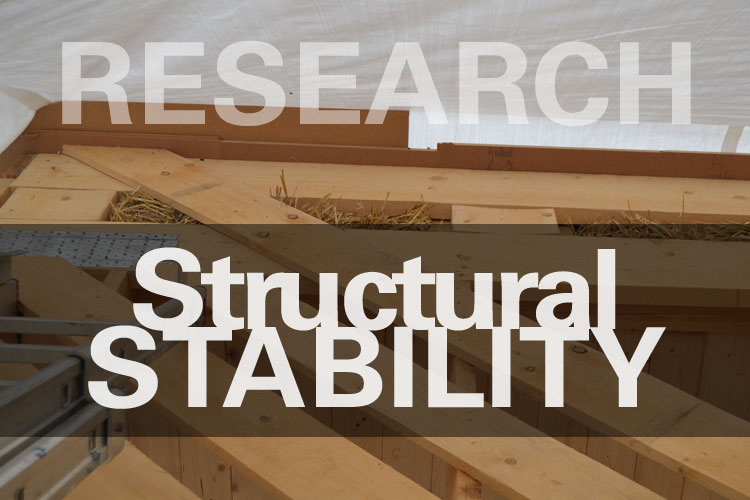Straw bale construction is a building technique that has excellent thermal performance and limited impact on the environment. Improving knowledge of the mechanical properties of straw bales is important to understand the behaviour of straw bale buildings, especially in case of natural calamities, where straw bales may carry a mechanical load and act as a “surviving cell”. The results of extensive tests conducted on bales of different materials are presented. The influence of the material, bale density, bale orientation, baling process and loading rate on the mechanical properties of straw bales was investigated. Force-displacement curves obtained from monotonic compression tests were analysed and relationships between the mechanical properties of straw bales and their geometry and density were determined.
Continuous measurements of bales lateral displacement allowed Poisson’s ratio to be calculated and, using a simple model, the strain to which bale strings are subjected during loading was estimated. Young’s modulus was shown to mainly depend on the square of the density, while no influence of the loading rate and of strings pre-tension was observed. The Poisson’s ratio did not remain constant during loading and it exhibited a different trend depending on the orientation of the bales. Moreover, it was observed that for flat bales a rearrangement of the straw fibres during loading occured and the maximum strings strain remained limited. Strings strain reached higher values for on-edge bales instead, and strings bursts occured more frequently.
Authors:
- Maraldi, Mirko
- Molari, Luisa
- Regazzi, Nicolò
- Molari, Giovanni
Link: http://www.sciencedirect.com/science/article/pii/S1537511017300752



